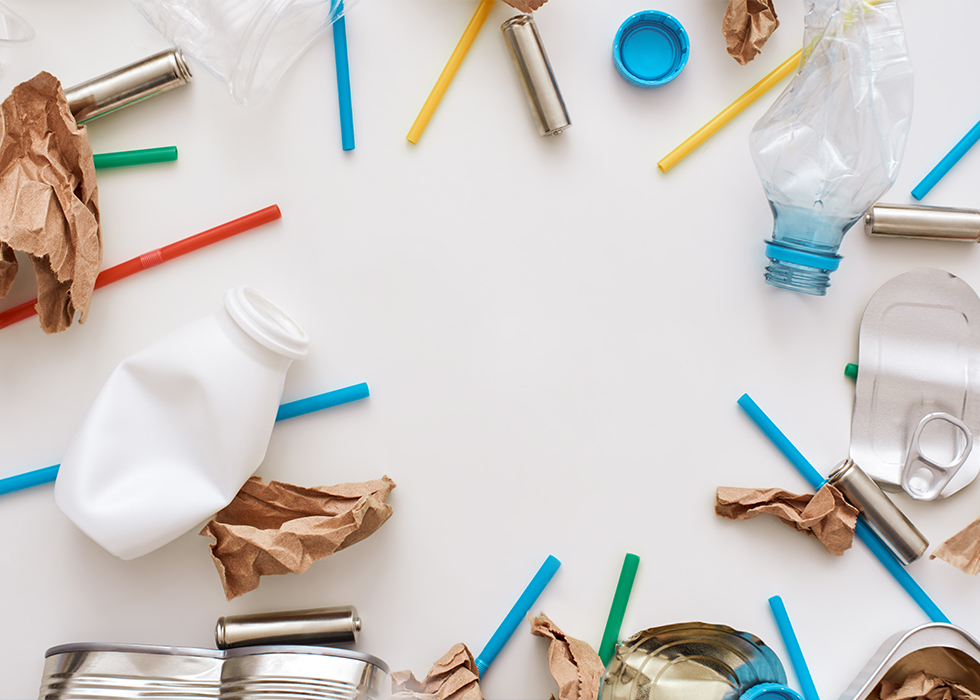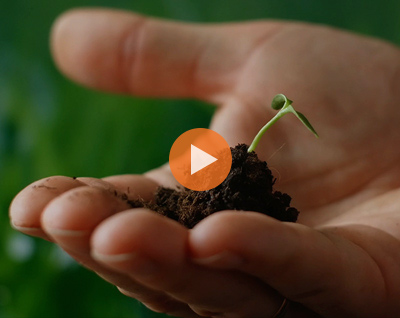From Ghost Net to Samsung Galaxy Devices: Hanwha Employs Ocean-conscious Recycling Technology in Electronics Components and More

Each year, an estimated 14 million tons of plastic waste finds its way into our oceans. To put that into perspective, that’s enough plastic pollution to fill over 500,000 Olympic sized swimming pools. So, it goes without saying that water pollution, specifically from plastic waste, is a compounding crisis in our world today. But where do we go from here?
The truth is, our modern society’s growing desire for consumable convenience means that the demand for plastic products won’t be slowing down any time soon. But neither are efforts to combat and reduce plastic pollution in our waterways.
Hanwha’s dedication to sustainability means prioritizing steps towards cleaning up our waters through forward-thinking technology and creative solutions. From upcycling plastic fishing nets into electronic device components and developing innovative PLA technology to collaborating with local communities in cleanup efforts, Hanwha is committed to creating a better future for our oceans and beyond.
The Ghosts of Plastics’ Past
Plastic waste such as plastic bags, food wrappers, to-go containers, straws, bottlecaps and beverage bottles are major components of all surface and deep-sea marine trash. Among these, fishing nets have emerged as a particularly harmful component of ocean pollution. Damaged, lost and discarded fishing nets, commonly referred to as “ghost nets,” make up at least 46% of the Great Pacific Garbage Patch and are a sizeable threat to our marine ecosystems.
Not only do these nets entangle vulnerable and sometimes endangered wildlife, but they also harm coral reefs by blocking them from crucial sunlight, causing breakage and even exposing fragile corals to disease. Removing these nets from our oceans is only half of the battle. Through innovative solutions, Hanwha has been tackling ocean plastic pollution, one ghost net at a time.
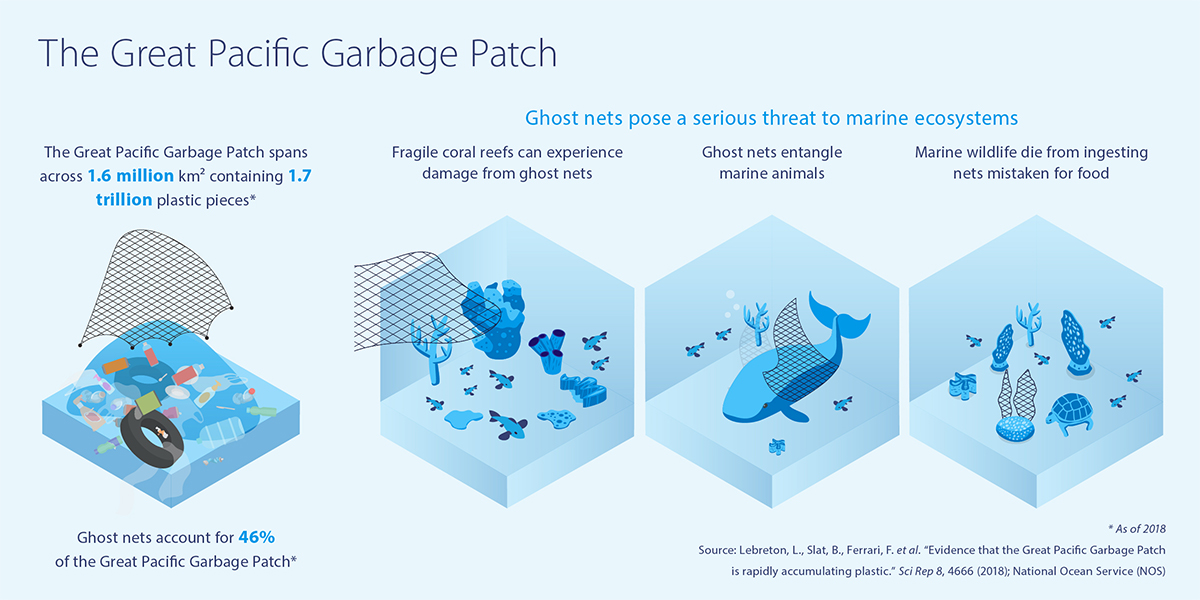
Fishing Nets Find a New Life
Thanks to new upcycling technology, it is now possible for ghost nets to find their way out of the ocean and into our electronic devices. Hanwha Compound, a wholly owned subsidiary of Hanwha Solutions, is using its advanced material-compounding technology to upcycle these polyamide-made nets into key components for electronic devices.
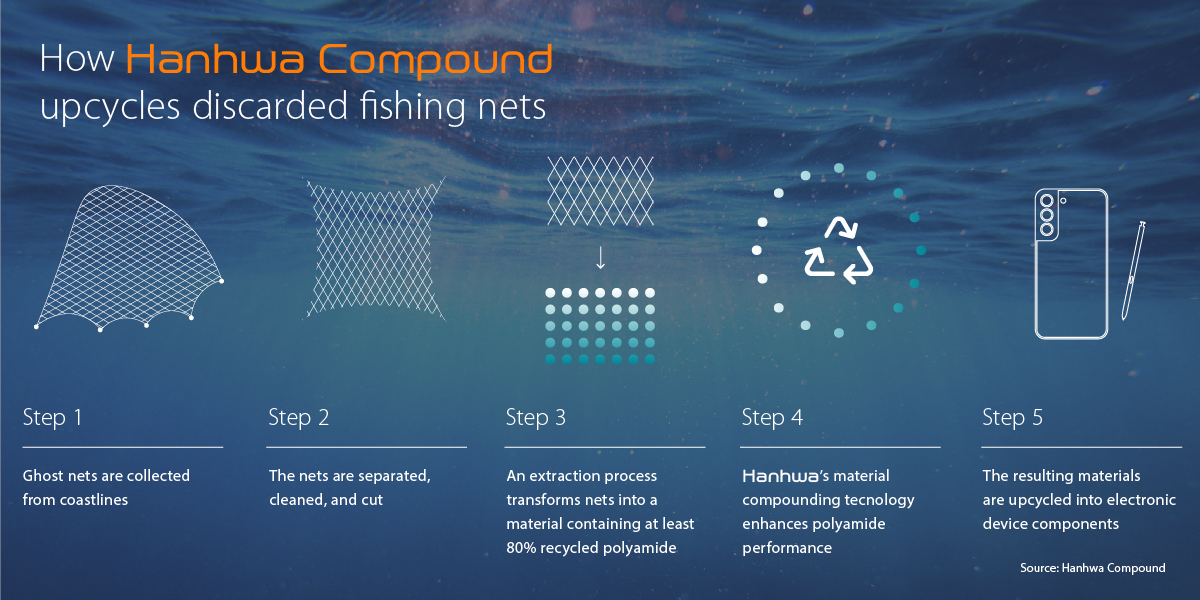
Ghost nets are collected from coastlines by local fishers. After collection, the nets are separated, cleaned and cut into smaller pieces. The pieces are then put through an extraction process that produces an eco-conscious material containing at least 80% recycled polyamide. From here, Hanwha Compound employs its material compounding technology to enhance polyamide performance. The result is a high-performance polyamide resin consisting of at least 20% recycled fishing net. This upcycling technology has been applied to Samsung Galaxy devices.
New technology opens up a world of possibilities and opportunities, as in this case, to upcycle and recycle ocean-bound plastics for use in our everyday products. In the same vein, further R&D is currently underway to apply this technology and similar processes to different areas of manufacturing. By expanding its applications to additional sectors such as automotive electronics and textiles, Hanwha is paving the way to implement even more sustainable solutions to benefit our world and secure our future.
Making Recycling More Efficient
The mounting call for innovative recycling technology to battle marine pollution is now at a crucial point for the health of our planet. However, the problem lies not only in the volume of plastic pollution currently wreaking havoc on our waterways, but also in the composition of these plastics. Additives make plastics stronger, more flexible and more durable, extending the life of certain plastic products up to 400 years. Now is the time to invest in more sustainable and biodegradable plastic options.
Currently, the most widely used form of biodegradable plastic is PLA (polylactic acid) which is derived from starchy plants such as cassava, corn and sugarcane. While PLA-based plastic is a more eco-friendly material, it is also less durable than traditional plastic.
To address this issue, Hanwha Compound has been drawing from its experience producing world-class materials to explore ways to strengthen PLA, making it possible to be utilized across a wide portfolio of popular franchise brands. If applied, millions of single-use traditional plastics could be kept out of our landfills and waterways each year.
Hanwha’s mission to brighten the future through sustainable solutions continues to drive the company’s innovations in green recycling technology. Hanwha Solutions’ selection as the main operator of the national Waste Plastic Pyrolysis Oil-Based Naphtha Production Technology Project is one such example. Launched by Korea’s Ministry of Trade, Industry and Energy as a part of its material parts technology development project, this venture aims to develop a Plastic-to-Chemicals (PTC) technology that transforms waste from plastic decomposition into usable plastic.
In cooperation with the Korea Institute of Energy Research, this newly developed process will produce higher quality naphtha from waste plastics by removing impurities from pyrolysis oil, making recycling more efficient. By 2024, Hanwha plans to design a commercial process that can produce 30,000 tons of naphtha annually.
Forging Progress Through Community Partnership
Not only is Hanwha making strides in recycling innovation and technology, but also through raising awareness and launching sustainability efforts at the community level. The Clean Up Mekong initiative as well as Hanwha Solutions Galleria Division’s Right!OCEAN campaign are doing just that.
Hanwha’s Clean Up Mekong campaign demonstrates how technology and innovation can be combined to create a positive impact on the environment. This initiative used boats powered by Hanwha Qcells’ Q.PEAK Duo modules to remove floating waste from the Mekong River. The solar-powered boats’ clean energy source makes it possible to collect waste without emitting additional greenhouse gasses or pollution. The Clean Up Mekong campaign successfully improved the health of the Mekong River and its surrounding communities, in addition to playing a vital role in raising environmental awareness and the positive impact that people can make individually and collectively.
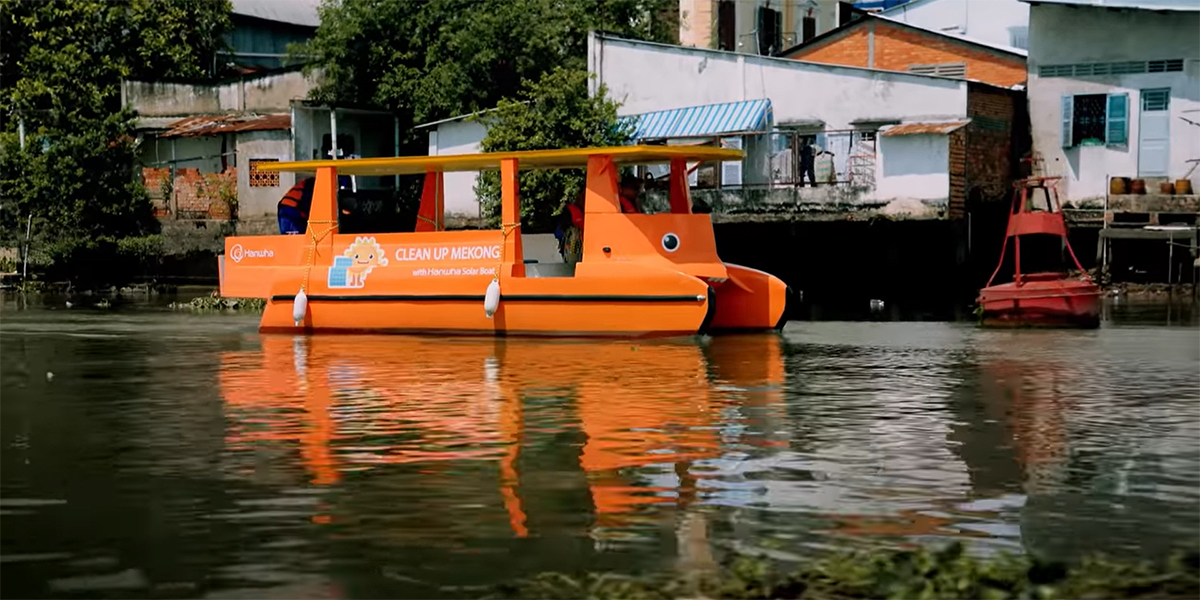
Clean Up Mekong employs solar-powered boats donated by Hanwha to collect ocean-bound waste.
The COVID-19 pandemic has not only impacted how we’ve been able to interact with one another, but it has also increased the use of disposable products including single-use plastics, thus creating more urgency than ever to keep these objects out of our oceans.
In response to such growing environmental concerns, Hanwha Solutions Galleria Division has partnered with the World Wildlife Fund (WWF) and launched the Right!OCEAN campaign aimed at protecting marine ecosystems and raising awareness on just how serious plastic pollution is.
A service team organized by Hanwha Solutions Galleria Division led environmental cleanup activities along South Korea’s Western coastline. During this event, members of the service team comprised of representatives from Hanwha Solutions Galleria Division, WWF and furniture designer, Mun Seung-ji, collected approximately 120 sacks of ocean-bound plastics and vinyl.
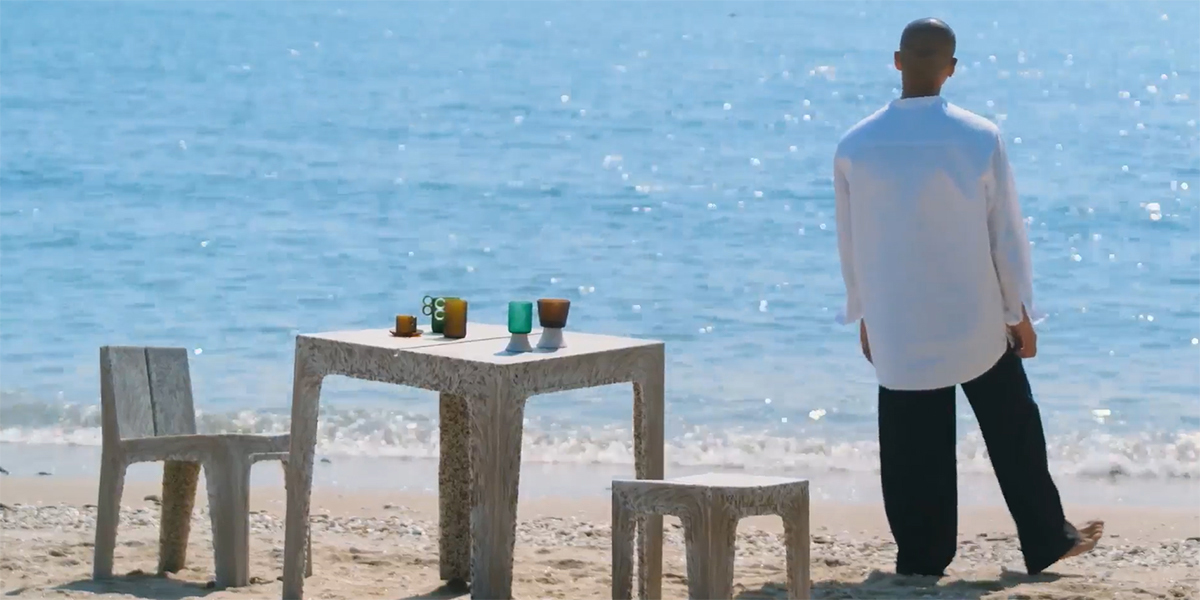
Designer Mun Seung-ji's distinctive furniture pieces transform ocean trash into treasure.
Using the reclaimed plastic waste, Mun upcycled them into unique furniture pieces that were exhibited at the Galleria Gwanggyo. Proceeds from the furniture sold were donated to the WWF to protect the environment.
Hope on the Horizon
Although tackling ocean pollution head-on can seem like a daunting task, great progress is being made every day to protect tomorrow’s marine ecosystems. With Hanwha’s innovative research and a flurry of community actions under way, a cleaner, safer and more sustainable future is on the horizon.
Get the latest news about Hanwha, right in your inbox.
Fields marked with * are mandatory.
- Non-employee
- Employee


